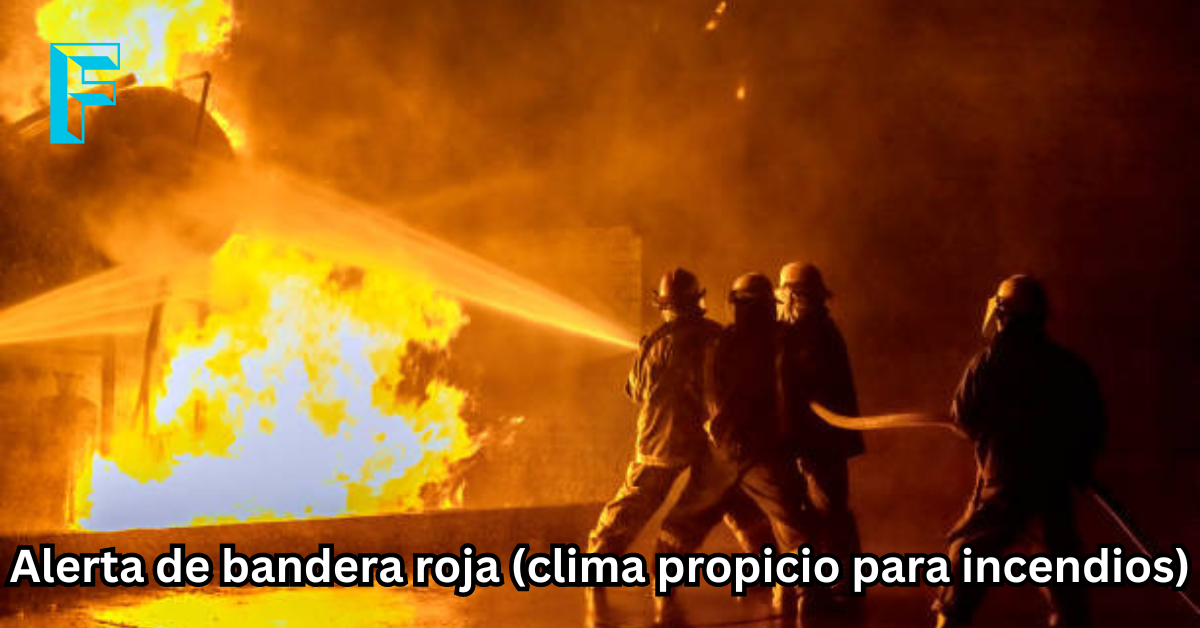What is Alerta de Bandera Roja?
Alerta de Bandera Roja, translated as Red Flag Warning, signifies weather conditions conducive to the rapid spread of wildfires. These warnings are issued by meteorological agencies to alert communities to heightened fire danger, urging vigilance and precautionary measures.
Understanding Red Flag Conditions Alerta de Bandera Roja (Clima Propicio para Incendios): Understanding and Mitigating the Risks 2024
Red Flag Conditions encompass a combination of factors that intensify fire risk. These may include low humidity levels, strong winds, high temperatures, and dry vegetation, creating an environment ripe for the ignition and rapid propagation of wildfires.
Causes of Alerta de Bandera Roja
Several factors contribute to the emergence of alerta de bandera roja (clima propicio para incendios), amplifying the vulnerability of ecosystems and human settlements alike. Alerta de Bandera Roja (Clima Propicio para Incendios): Understanding and Mitigating the Risks 2024
Natural Causes
- Weather Patterns: Anomalies in weather patterns, such as droughts or heatwaves, can elevate fire danger by desiccating vegetation and fostering ignition.
- Lightning Strikes: Electrical storms can ignite wildfires through lightning strikes, particularly in areas with parched landscapes. Alerta de Bandera Roja (Clima Propicio para Incendios): Understanding and Mitigating the Risks 2024
Human Activities
- Unattended Campfires: Negligence in extinguishing campfires can lead to accidental ignitions, especially during periods of heightened fire risk.
- Arson: Deliberate acts of arson pose a significant threat, exacerbating fire conditions and endangering lives and property.

The consequences of alerta de bandera roja extend beyond immediate fire hazards, encompassing ecological, economic, and social ramifications. Alerta de Bandera Roja (Clima Propicio para Incendios): Understanding and Mitigating the Risks 2024
about:blank
Ecological Impact
- Habitat Destruction: Wildfires consume vast swathes of natural habitats, imperiling flora and fauna and disrupting delicate ecosystems. Alerta de Bandera Roja (Clima Propicio para Incendios): Understanding and Mitigating the Risks 2024
- Air Quality Degradation: Smoke emissions from wildfires degrade air quality, posing health risks to humans and wildlife alike. Alerta de Bandera Roja (Clima Propicio para Incendios): Understanding and Mitigating the Risks 2024
Economic Consequences
- Infrastructure Damage: Wildfires can ravage infrastructure, including homes, businesses, and utilities, incurring significant repair costs.
- Revenue Loss: Industries reliant on unaffected landscapes, such as tourism and agriculture, may suffer losses due to reduced productivity or visitor influx.
Social Implications
- Displacement: Evacuations prompted by wildfires can displace communities, straining resources and necessitating humanitarian aid.
- Psychological Toll: The trauma of wildfire events can have enduring psychological effects on affected individuals, necessitating support and counseling services.
Mitigating Risks and Enhancing Preparedness
Effective wildfire management hinges on proactive measures to mitigate risks and enhance community resilience.
Public Awareness Campaigns
- Education Initiatives: Public outreach programs can raise awareness about fire safety practices, empowering individuals to adopt preventive measures.
- Community Engagement: Foster community cohesion and collaboration to bolster preparedness efforts and facilitate swift emergency responses.
Vegetation Management
- Fuel Reduction: Implement controlled burns and vegetation clearance programs to reduce fuel loads and mitigate the severity of wildfires.
- Defensible Space: Encourage homeowners to create defensible space around properties by clearing flammable vegetation and maintaining fire-resistant landscaping.
Early Warning Systems
- Integrated Technology: Leverage advanced meteorological and remote sensing technologies to enhance early warning capabilities and facilitate timely evacuations.
- Community Alerts: Establish robust communication networks to disseminate alerts and evacuation orders promptly, ensuring public safety.
Frequently Asked Questions (FAQs)
Q: How often are Red Flag Warnings issued? Red Flag Warnings are typically issued based on forecasted weather conditions, varying in frequency depending on regional climatic patterns and seasonal trends.
about:blank
Q: What actions should I take during a Red Flag Warning? During a Red Flag Warning, prioritize safety by avoiding activities that could inadvertently spark fires, such as outdoor burning or using equipment that generates heat or sparks. Stay informed through official channels and heed evacuation orders if necessary.
Q: Are there specific areas more prone to Red Flag Conditions? Regions characterized by arid climates, dense vegetation, and a history of wildfires are particularly susceptible to Red Flag Conditions. These may include areas with Mediterranean, chaparral, or grassland ecosystems.
Q: How can communities prepare for Red Flag Warnings? Community preparedness involves implementing wildfire mitigation measures, developing emergency response plans, and fostering a culture of fire safety through education and awareness initiatives.
Q: What role do firefighters play during Red Flag Warnings? Firefighters play a crucial role in preemptive firefighting efforts, conducting patrols, monitoring fire-prone areas, and responding swiftly to emerging wildfire incidents.
Q: How can individuals support wildfire mitigation efforts? Individuals can contribute to wildfire mitigation by adopting fire-smart practices, such as maintaining defensible space around properties, adhering to burn bans, and reporting suspicious activities to authorities.
Conclusion
In conclusion, alerta de bandera roja (clima propicio para incendios) necessitates proactive measures and community collaboration to mitigate risks and safeguard lives, property, and ecosystems. By fostering a culture of fire safety, enhancing preparedness, and leveraging advanced technologies, we can effectively mitigate the impact of wildfires and promote resilience in the face of evolving environmental challenges.


